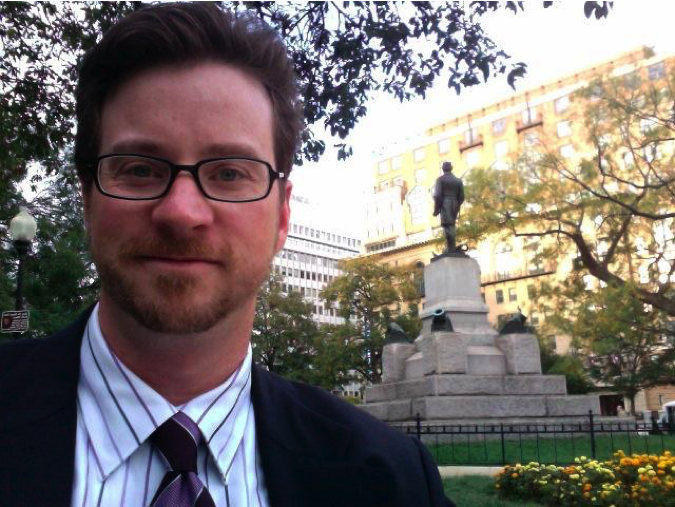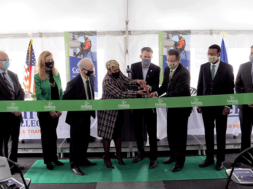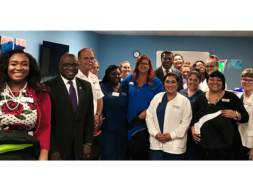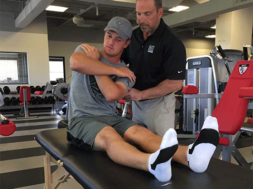
By Dr. Joel A. English, Vice President, Centura College, Aviation Institute of Maintenance, and Tidewater Tech
In a recent interview in the Los Angeles Times, Brian Niccol, the relatively new 41-year-old CEO of Taco Bell discussed his renovation of the restaurant chain’s advertising approach. You may have noticed how Taco Bell has been actively – and absurdly – renovating its menu and its image in order to keep up with the 18-24 year-old market. Used to be that Taco Bell at least somewhat tried to relate itself with Mexican food: tacos, burritos, nachos. But Niccol’s restaurant menus now feature the truly bizarre – the Quesarito, the Beefy Nacho Griller, the Doritos Cheesy Gordita Crunch, the Nacho Cheese Locos Tacos Supreme. Taco Bell is not only inventing food items, they’re making up words! At this point, I’m fairly certain their food would be unrecognizable to a Mexican person.
But more importantly, Taco Bell has never been a Mexican food restaurant; it’s been an American food restaurant, which appeals to the decision-making of the 18-24 year-old American. And they’re doing a good job of it.
Guess who else is appealing to 18-24 year-old American decision-makers? Obviously, we are.
In the LA Times interview, Niccol signals that he doesn’t really think of his organization as a restaurant, but rather, as something of a lifestyle choice. When discussing his innovative appeals to Generation Y, Niccol states, “If you let your brand get old, you will die. That means you deliver experiences that really matter to the current generation.” Niccol isn’t delivering food, but rather, experience.
To meet the sensibilities of the Millennial generation, Niccol has rebranded his message from “food is fuel” to “food is an experience.”
To meet the sensibilities of the Millennial generation, Niccol has rebranded his message from “food is fuel” to “food is an experience.” He has transformed the message from “you decide what food you eat,” to “the food you eat plays in to who you are.” The consumers that Taco Bell (and our schools) speak to are more likely to make decisions based on feeling rather than thinking, on gut instinct rather than logical rationale, on the perception of personal fit rather than well-reasoned planning. And I’m afraid this applies not only to the momentary, low-stakes, ten-dollar decision-making of “what’s for lunch”; it also applies to the lifelong, high-stakes, tens-of-thousands-of-dollar decision-making of where to go to school and how to engage once there.
This new phrase is less a call to come eat and more a call to “be a Taco Bell kind of person.” And Generation Y responds to that.
Take a look at how Taco Bell’s catchphrases have changed over time:
Make a Run for the Border (1992-1997)
This message was an overt, clear appeal to choose Taco Bell for a quick meal. To respond to this call to action, the consumer knew exactly what to do: drive to a nearby restaurant.
¡Yo Quiero Taco Bell! (1997-2001)
This one featured the cute Chihuahua, and appealed to the desire for savory Southwest taste. (“Yo Quiero” means “I want.”) To respond to this call to action, the consumer was asked to be like the doggy and yearn for some carbs, fat, and salt.
Think Outside the Bun (2001-2011)
Again, like the previous slogans, this catchphrase pointed at food. The phrase stated, we realize there are a variety of forms and locations to get cheap meat, cheese, bread, and salt, and ours is slightly different from the various burger options you have.
Live Más (2011-Present)
This new slogan is fundamentally different. While the previous three slogans suggested something about the food the consumer would experience if they followed the appeal to choose Taco Bell, this new phrase says something more about the lifestyle the consumer would enjoy if they chose Taco Bell.
The Live Más catchphrase is a complete departure from previous calls to action. All of the previous statements directly tell the audience what to do: Choose Taco Bell for your next meal. This new phrase is less a call to come eat and more a call to “be a Taco Bell kind of person.” And Generation Y responds to that.
Let me say that again: organizations that present a compelling message that seems to fit the sensibility and “vibe” of today’s 18-to-24 year-old will more likely win their business than those who simply present a logical value proposition. With kids these days, logic loses to lifestyle.
Career schools have something to learn from Taco Bell and Niccol’s new messaging. Our faculty constantly find themselves “selling” the benefits of becoming a professional in the industry in which they teach. Our educators become more powerful agents of change for students when they connect the lifestyle of a chef, welder, nurse, or mechanic with the personal lives of students. Our administrative staff is constantly selling why good decision-making (come to class on time, study before an exam, make smart financial decisions, explore career opportunities prior to graduation) is personally fulfilling and meaningful, rather than being merely “expectations of good students.” Our admissions professionals find themselves talking as much about how student life is fulfilling as they talk about rewarding future employment. Even though both messages are true, the 18-24 year-old seems to respond at a gut level first, and logic takes a distant back seat.
Please know, I am not suggesting that Career Schools serve out a Taco Bell-level product. Obviously, our product is completely different from Taco Bell’s. Our product pays off in the future; theirs pays off only in the form of momentary sensory enjoyment. Our product takes work; theirs is easy. Our product takes time to play out; theirs is fast. Our product is a process; theirs is merely processed. The value of our product increases year after year; the value of theirs evaporates immediately. Our product creates a career; theirs ignores the future. Our product inspires pride as it unfolds; theirs is more likely to inspire regret.
But still, our target markets are the same, and therefore, what is convincing to our potential customers are the same. Brian Niccol is right: whether you’re an instructor, a financial aid officer, a registrar, a career advisor, an admissions rep, a campus director, or anyone else within a career school, it’s important to consider how you can “deliver experiences that really matter to the current generation.” If we appeal to both the logic and the lifestyle of the student, we will excel in our work and help more students find relevance in the career development opportunities that we offer.
Brian Niccol is right: whether you’re an instructor, a financial aid officer, a registrar, a career advisor, an admissions rep, a campus director, or anyone else within a career school, it’s important to consider how you can “deliver experiences that really matter to the current generation.”
Attracting Millennials means that we’ll advertise our messages not only with different arguments and with different styles, but it also means we’ll advertise through different media. We all know that newspaper has become a dead medium for attracting students, and that we only go to TV and radio to drive prospective students to online capture sources. But where we’re still old fashioned in thinking that a website is a place to hang a capture page first and provide information only after we’ve received communication from an obedient pre-student. 2009’s prospective student may have seen a capture page as a necessary evil in order to learn more information about a school. But today’s shopper sees a capture page at the top of a website as a signal – a signal that whatever information might be behind the wall of that Web form is unlikely to be appealing or relevant; otherwise, the organization would have just shown it to them.
Generation Y expects their media to be open, not closed; glitzy, not merely informational; immediately entertaining, not restrictive to only those who first give up their personal information. Our prospective students are too cynical to be sold. Direct sales repels them. Go to Full Sail University’s website at fullsail.edu. That’s what Generation Y expects from a website: action, technology, youth, passion, quick cuts, and sex appeal. You have to search Full Sail’s website for a capture page.
Of course, most of us realize that the amount of time our prospective students spend on a computer is a fraction of the time they spend on their mobile devices. That’s why so many of us are experimenting with banner ads on “Pandora,” “Clash of Clans,” and “Words With Friends.” Advertising has always wanted to be where the eyes are, and every 19-year-old’s eyes are down on their phone. So, it makes sense to think mobile when you think about where to place advertising.
But “Our graduates find employment at a rate of 78 percent” is simply not a winning creed for a Generation Y audience, whether that traditional appeal appears on a website, a TV ad, or a Trivia Crack banner. Taco Bell has found that a crunchy, cheesy, spicy message is most persuasive to 18-24 year-olds when it is presented as joining a community group of other young, tattooed hipsters. (And Brian Niccol has increased his digital marketing budget from $1 million to $70 million in the past four years!) Though their product is similar to what it was before (tortillas, meat, and cheese), the media, message, style, and appeal has significantly changed. If we are going to continue to be relevant to a Millennial audience, we better be willing to consider a similar vibe-change in our media, and be ready to broadcast a message of lifestyle over logic.

DR. JOEL ENGLISHis the Vice President for Operations of Centura College, Aviation Institute of Maintenance, and Tidewater Tech, where he supervises all operations over the 20 campuses across the country. Dr. English served as a Commissioner for the Accrediting Commission of Career Schools and Colleges for six years and the Chair of ACCSC for two years, as well as chairing the Distance Education Committee. In previous positions, Dr. English served as the CEO for the Ohio Centers for Broadcasting, Illinois Centers for Broadcasting, and Miami Media School, a family of schools dedicated to technical education in radio, television, and internet media broadcasting. He also oversaw distance learning and school operations at several campuses as a Regional Director and Executive Director at Centura College, and he was formerly an Assistant Professor of English and Distance Learning at Old Dominion University. Dr. English recently published Plugged In: Succeeding as an Online Learner through Wadsworth/Cengage Learning, as an extension of his dedication to supporting student success within online courses and programs. Dr. English holds a Ph.D. in Rhetoric and Composition from Ball State University, and an M.A. and B.A. in Technical and Expository Writing from the University of Arkansas at Little Rock.
Contact Information: Dr. Joel A. English // Vice President // Centura College, Aviation Institute of Maintenance, and Tidewater Tech // jenglish@centura.edu
References
“How I Made It: Taco Bell CEO Brian Niccol.” Samantha Masunga, Contact Reporter. http://www.latimes.com/business/la-fi-himi-niccol-20150719-story.html













